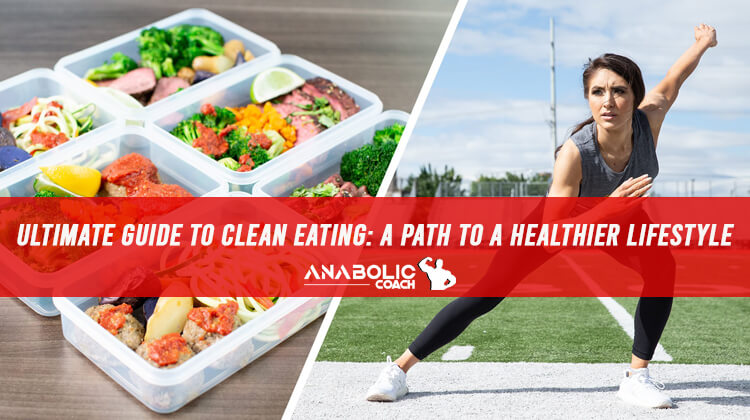In today’s fast-paced world, maintaining a healthy diet can be challenging. Processed foods, sugary drinks, and fast food are readily available and often tempting. However, clean eating offers a sustainable way to nourish your body with wholesome, natural foods.
This guide provides a comprehensive overview of clean eating, its benefits, and how to implement it into your daily life for long-term health and well-being.
What is Clean Eating?
Clean eating is about consuming whole, unprocessed foods in their most natural state. It emphasizes fruits, vegetables, lean proteins, whole grains, and healthy fats.
The goal is to eliminate or minimize processed foods, artificial ingredients, and refined sugars from your diet. This approach not only supports physical health, but also encourages mindful eating, where you become more aware of what you eat and how it affects your body.
Summary
Whole Foods:
These include foods that are minimally processed and closest to their natural form. Examples are fresh fruits and vegetables, whole grains, lean meats, and legumes.
Unprocessed Foods:
Foods that are free from added sugars, unhealthy fats, and artificial ingredients.
Mindful Eating:
Paying attention to the food you eat, savoring each bite, and listening to your body’s hunger and fullness cues.

Benefits of Clean Eating
#1. Improved Health:
Clean eating can reduce the risk of chronic diseases, such as; heart disease, diabetes, and cancer by providing essential nutrients and antioxidants.
A diet rich in fruits, vegetables, and whole grains is packed with vitamins, minerals, and phytochemicals that protect against illness.
#2. Weight Management:
By focusing on nutrient-dense foods, clean eating helps maintain a healthy weight. These foods are generally lower in calories, but higher in nutrients, keeping you fuller for longer and reducing the likelihood of overeating.
#3. Enhanced Energy Levels:
Whole foods provide sustained energy, helping you stay active and alert throughout the day.
Complex carbohydrates like whole grains and starchy vegetables release energy slowly, preventing blood sugar spikes and crashes.
#4. Better Digestion:
High-fiber foods like fruits, vegetables, and whole grains promote healthy digestion and prevent digestive issues, such as; constipation and bloating.
#5. Improved Mental Health:
A balanced diet rich in vitamins and minerals supports brain health and can improve mood and cognitive function. Omega-3 fatty acids, found in fish and flaxseeds, are particularly beneficial for mental well-being.
Key Principles of Clean Eating
Eat Whole Foods:
Focus on fresh fruits, vegetables, lean proteins, whole grains, and nuts and seeds. These foods are naturally nutrient-dense and free from harmful additives.
Avoid Processed Foods:
Eliminate or reduce foods with artificial additives, preservatives, and refined sugars. Processed foods often contain empty calories and harmful chemicals that can negatively impact health.
Read Labels:
Be mindful of ingredients in packaged foods. Choose items with minimal ingredients and avoid those with chemicals and additives. Look for whole ingredients and avoid products with added sugars, unhealthy fats, and artificial colors or flavors.
Cook at Home:
Prepare your meals to control ingredients and ensure they are nutritious. Cooking at home allows you to use fresh, whole foods and avoid the hidden sugars and fats often found in restaurant meals.
Stay Hydrated:
Drink plenty of water and avoid sugary beverages. Herbal teas and infused water are great alternatives. Proper hydration is crucial for overall health and can aid in digestion and metabolism.

Clean Eating Food List:
Fruits and Vegetables:
Apples, berries, spinach, kale, carrots, and sweet potatoes. These foods are high in vitamins, minerals, and antioxidants that support overall health.
Lean Proteins:
Chicken breast, turkey, fish, tofu, and legumes. Protein is essential for muscle repair and growth, and these sources provide high-quality protein without excessive fat.
Whole Grains:
Brown rice, quinoa, oats, and whole wheat bread. Whole grains are rich in fiber, which supports digestion and helps keep you full longer.
Healthy Fats:
Avocados, olive oil, nuts, and seeds. Healthy fats are essential for brain health, hormone production, and overall energy.
Dairy Alternatives:
Almond milk, coconut yogurt, and nutritional yeast. These options are great for those who are lactose intolerant or prefer plant-based diets.
Sample Clean Eating Meal Plan:
Breakfast:
Overnight oats with chia seeds, berries, and a drizzle of honey. This meal is high in fiber and antioxidants, providing sustained energy for the day.
Lunch:
Grilled chicken salad with mixed greens, cherry tomatoes, cucumbers, and a lemon vinaigrette. This salad is packed with lean protein, vitamins, and healthy fats.
Snack:
Apple slices with almond butter. This snack combines healthy fats and fiber to keep you satisfied between meals.
Dinner:
Baked salmon with quinoa and steamed broccoli. Salmon is rich in omega-3 fatty acids, while quinoa provides complete protein and broccoli adds fiber and vitamins.
Dessert:
Greek yogurt with fresh fruit and a sprinkle of flaxseeds. This dessert is high in protein and healthy fats, making it a nutritious end to the day.

Transitioning to Clean Eating
Transitioning to a clean eating lifestyle can seem overwhelming at first, but it doesn’t have to be. Start small and gradually make changes to your diet.
Begin by replacing one processed food item with a whole food alternative. For example, swap out sugary cereals for oatmeal or replace soda with infused water. Over time, these small changes will add up and become a natural part of your routine.
Meal Prep Tips for Clean Eating:
#1. Plan Ahead:
Create a weekly meal plan and shopping list to ensure you have all the ingredients you need.
#2. Batch Cook:
Prepare large batches of food and store them in the fridge or freezer for quick and easy meals.
#3. Use Containers:
Invest in good quality food storage containers to keep your meals fresh and organized.
#4. Prep Ingredients:
Wash and chop fruits and vegetables in advance to save time during the week.
Common Challenges to Clean Eating and How to Overcome Them
#1. Time Constraints:
Lack of time is a common barrier to clean eating. Overcome this by meal prepping and using time-saving kitchen gadgets like slow cookers, air fryers and pressure cookers.
#2. Budget:
Eating healthy can sometimes be perceived as expensive. Save money by buying in bulk, choosing seasonal produce, and shopping at local farmers’ markets.
#3. Cravings:
Cravings for processed foods can be challenging. Combat this by finding healthy alternatives and keeping nutritious snacks on hand.
Start your clean eating journey today! Begin by incorporating more whole foods into your meals and gradually eliminating processed items.
Remember, it’s about progress, not perfection. Share your clean eating experiences and recipes with friends and family to inspire others to adopt a healthier lifestyle.
Join online communities or follow clean eating blogs and social media pages for tips, recipes, and support. You can also get free coaching ideas from nutrition and diet experts at Anabolic Coach.

Conclusion
Clean eating is more than just a diet; it’s a lifestyle change that promotes overall health and well-being.
By focusing on whole, unprocessed foods, you can improve your physical health, boost your energy levels, and enhance your mental clarity. Embrace clean eating and experience the transformative benefits it offers. Your body will thank you!
Clean eating is a journey towards a healthier, more vibrant life. Start small, stay committed, and enjoy the positive changes you will see in your health and well-being.
By following the principles and tips outlined in this guide, you can make clean eating a natural and enjoyable part of your everyday life.
Remember, the goal is to nourish your body with the best possible foods to support your overall health and well-being. So take the first step today and embark on your clean eating journey. Your future self will thank you!


